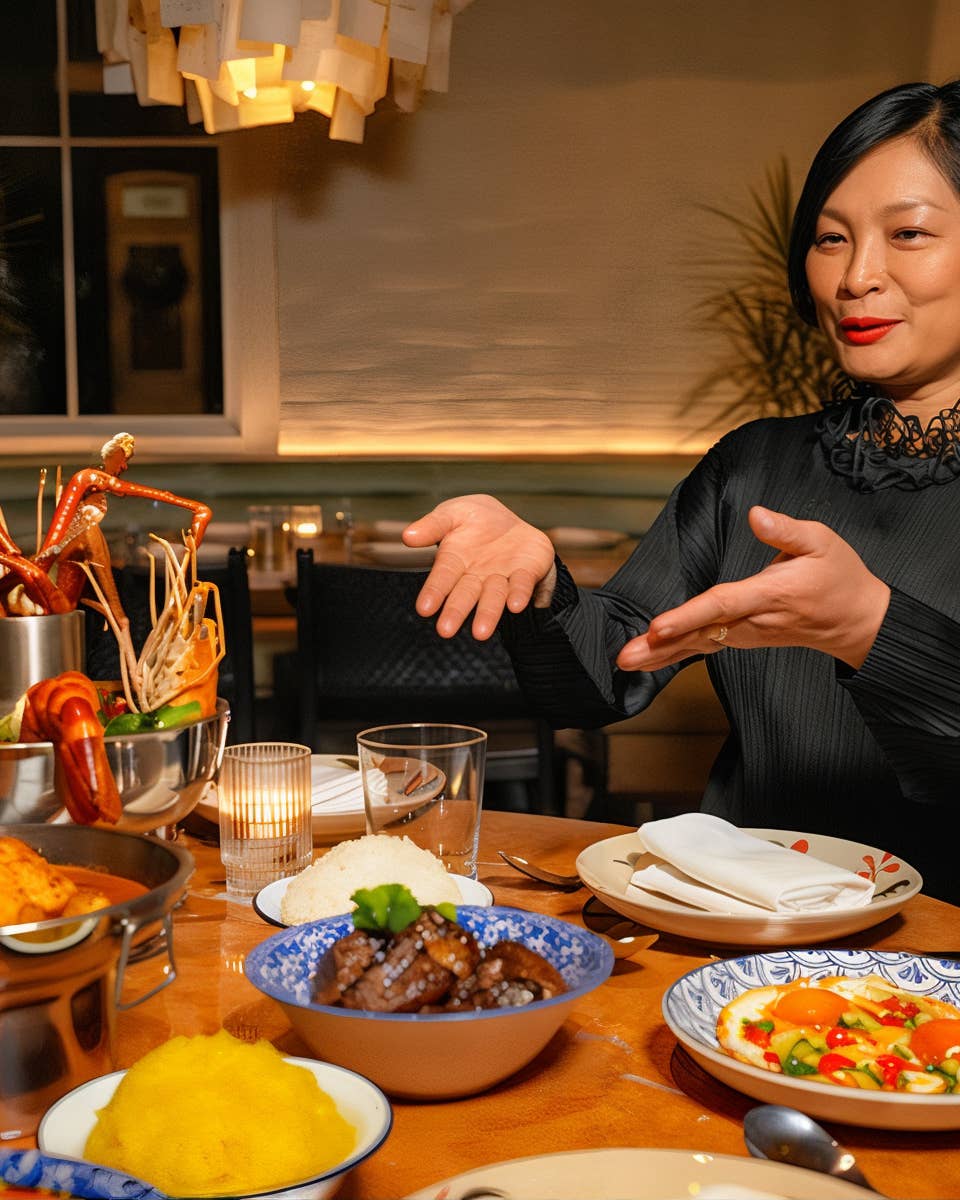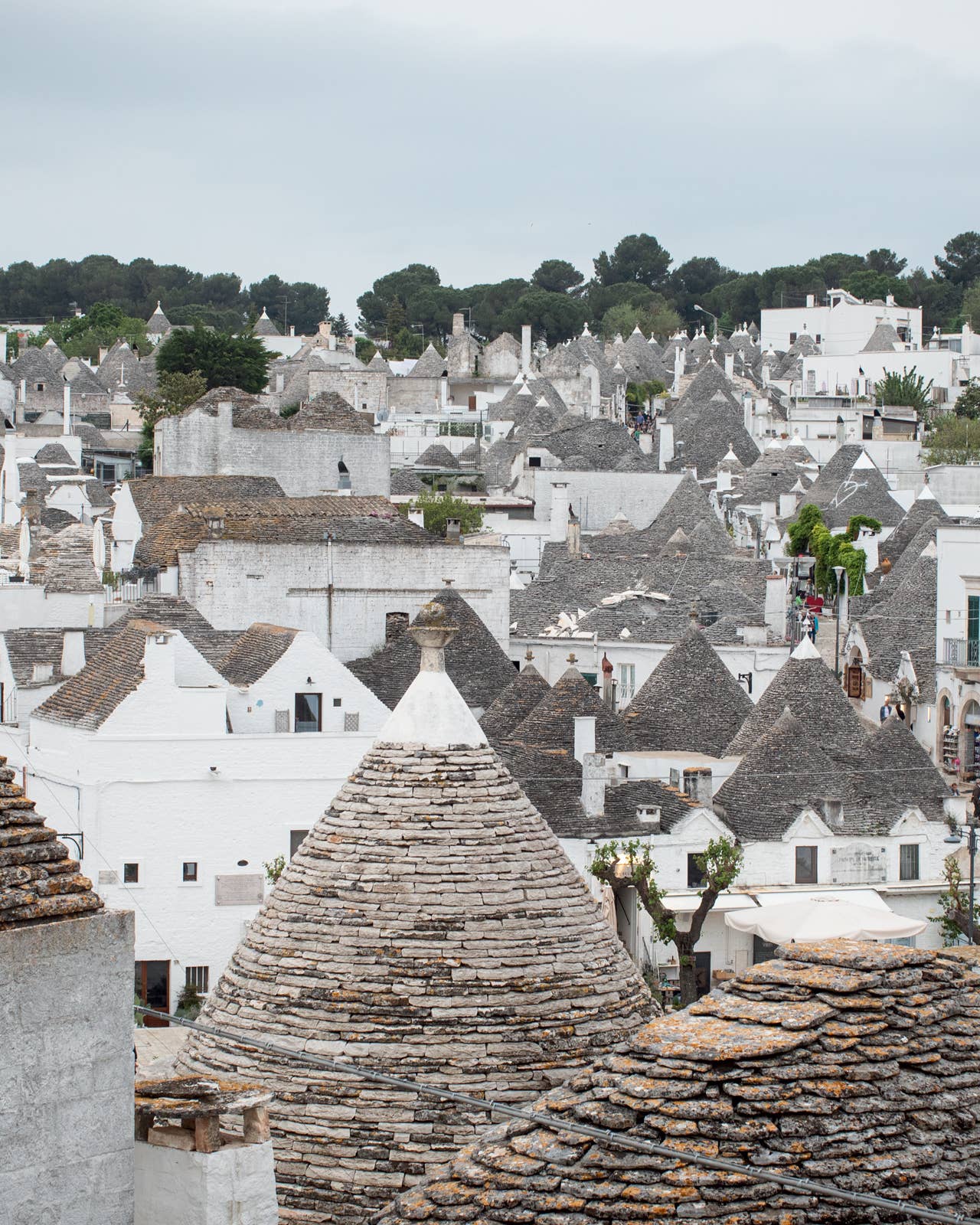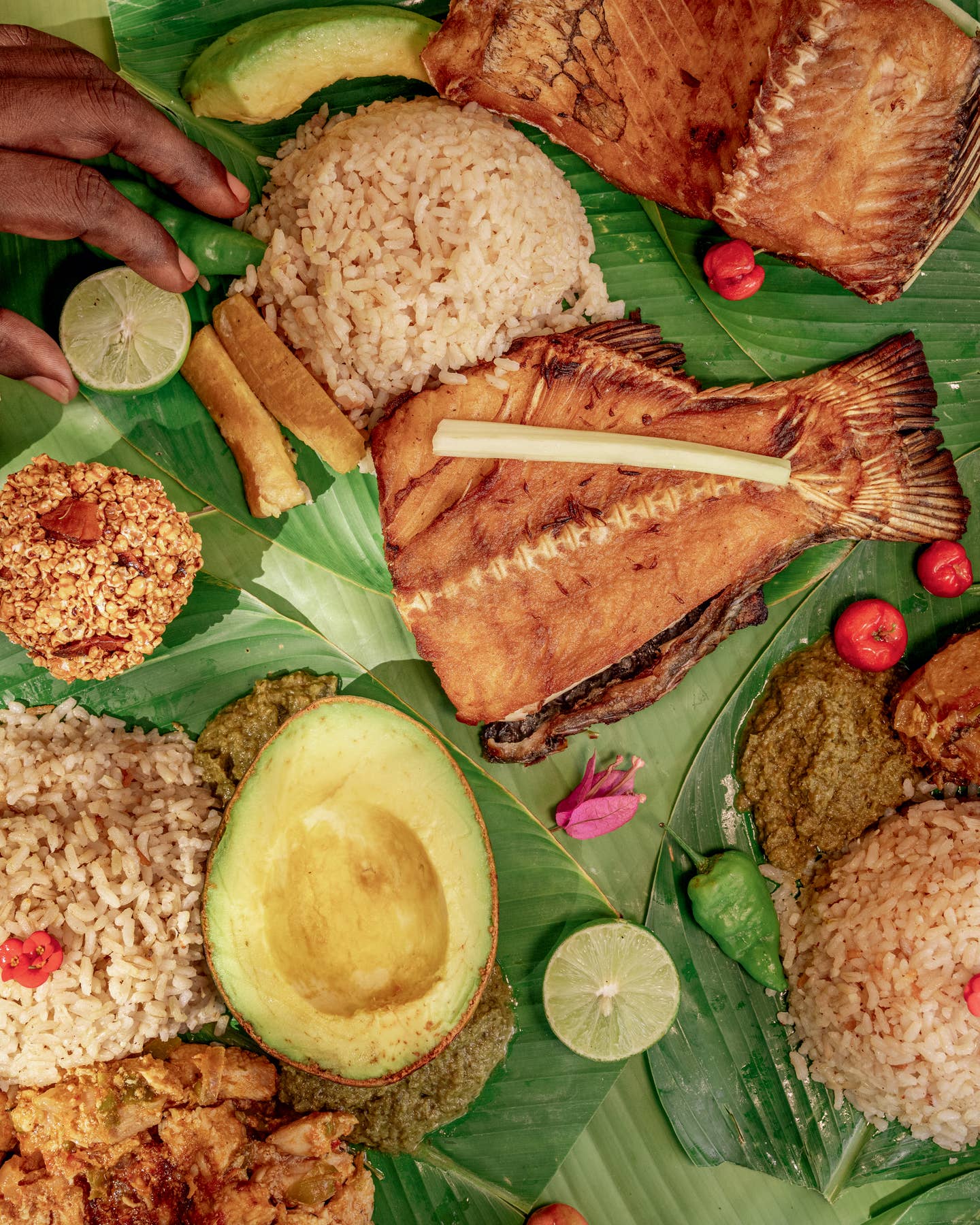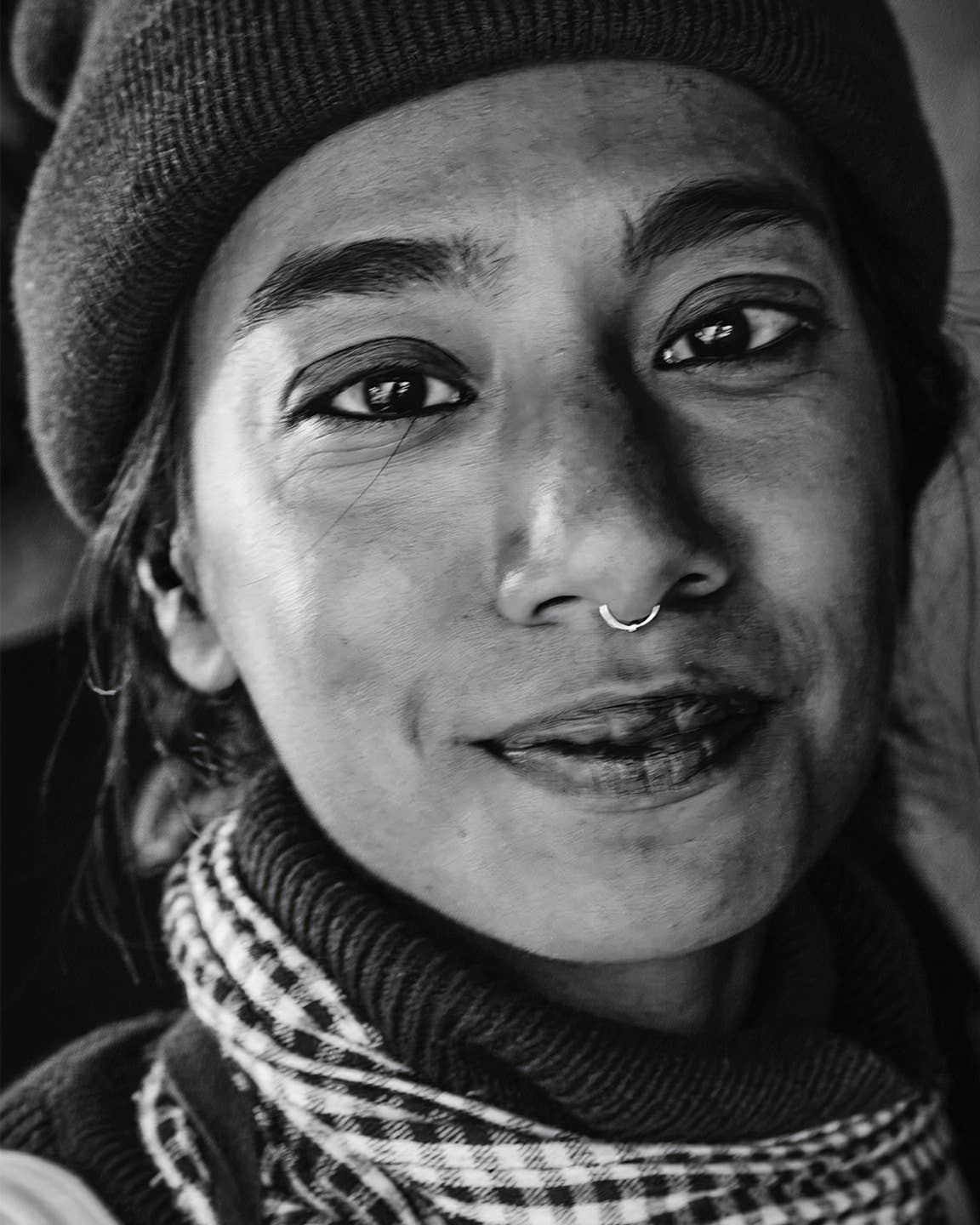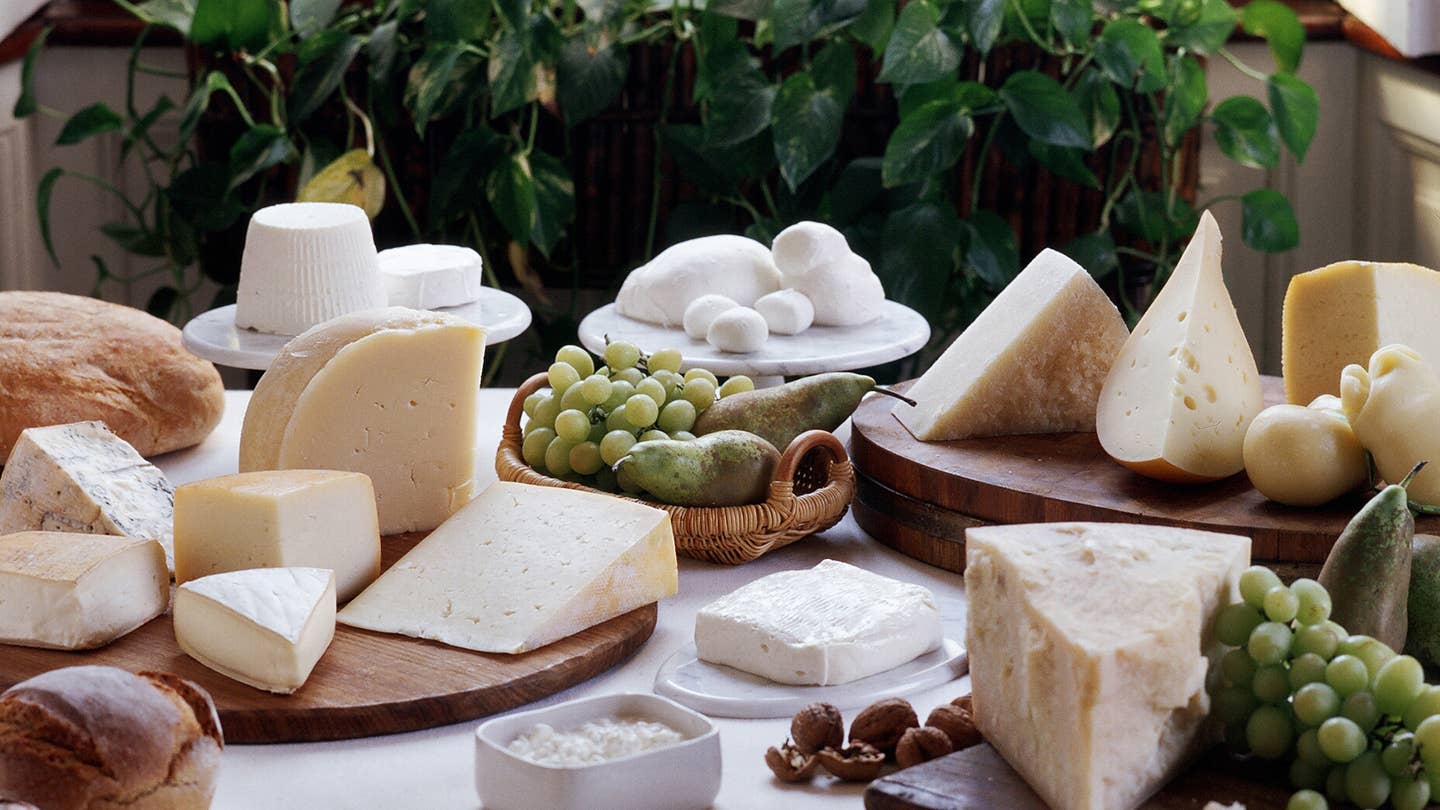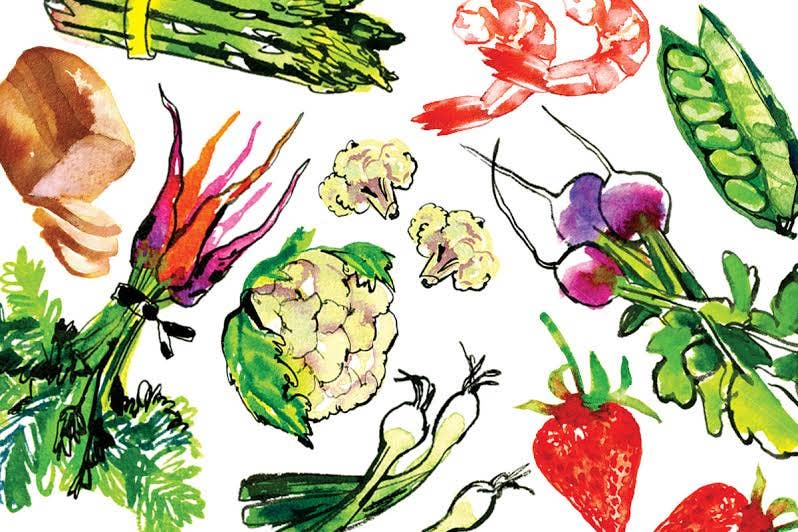
North Island Bounty
I'm in New Zealand—an isolated country, adrift between the Tasman Sea and the South Pacific, perhaps best known (a bit unfairly) for lamb, Hobbits, and the flying bungee cord—and I'm thinking, I'm not going home. Somehow I will persuade my family to join me, and we will settle down, plant a little fruit orchard, cut out early from work to go surfing, learn what a rugby scrum is…. I have become enchanted, in other words—and it's all because of a place called Matakana.
On my first trip to New Zealand, a year ago, I spent most of my time on the country's South Island. I found plenty of good food and wine there, in places like Blenheim, Picton, and Christchurch, but I also heard people talking with great enthusiasm about the subtropical region of the North Island, located north of Auckland, that has lately become increasingly appreciated for its long growing season, its abundance of seafood, and its laid-back yet active community of growers, winemakers, fishermen, and chefs. I resolved to see that region for myself on my next visit—and here I am.
The gateway to this lush wonderland is the Matakana coast and, specifically, the village of the same name, nestled in the crook of an elbow of land that juts into the Hauraki Gulf about a 45-mile drive from Auckland. This was once the domain of the Maoris, New Zealand's original settlers, who came here by canoe from Polynesia. They lived, roamed, and fought on this landscape, once blanketed by native kauri trees (New Zealand's giants, equivalent to California's redwoods). The first Europeans arrived in the area in 1848, traveling up the coast from Auckland and into the mouth of the Matakana River. Some were British, like most of the colonists in New Zealand, but there were also Belgians, Russians, and Dalmatians, all of whom brought their own crops and foodways with them. The newcomers chopped down most of the ancient kauri trees for timber, clearing the land to make way for dairy farms and orchards.
The matakana coast's alchemic mixture of creative personalities and earthly bounty has turned it into a food lovers' paradise, and the region's gustatory wealth is nowhere more evident than at Matakana's popular weekly farmers' market. The town consists of little more than an excellent bakery, a general store, a restaurant, and a primary school; but every Saturday morning it comes alive with vendors from all over the nearby countryside and their multitudes of customers—thousands in the summer months—from many miles around.
The market is the brainchild of two different but like-minded couples: Christine and Richard Didsbury, commercial developers who live in a modern-day castle on a promontory in Brick Bay and whose interest in supporting their community in a natural and sustainable way led them to help fund the market's development; and Joe Polaischer, an Austrian expatriate who is one of the world's leading experts on permaculture (an agricultural philosophy developed in Australia in the 1970s that supports the development of harmonious ecosystems designed to promote diverse, sustainable, and resilient environments), and his Kiwi wife, Trish Allen. At his farm stand, Polaischer, a sage-looking character in a groovy blue tunic, tells me that he decided to start the market as a means of educating people about the land, as well as providing a place for farmers and other food producers to sell their wares. He also designed the market layout (the concept was inspired by markets Polaischer had seen in Japan), which has the approximate form of a wheel, with concentric rings of stalls made from sustainable timber propped on barrels and backdrops of beautiful photo blow-ups of each vendor at work.
Some 47 local growers and producers share, and take turns selling from, the market's 31 stalls. Raw foodstuffs alternate with cooked specialties. Jeni Quayle and her partner, Greg Fletcher, from Waybyond Organics offer bags of salad—mixtures of whatever Quayle feels like putting together, including sliced radishes, arugula, edible flowers, coriander seeds, lemon basil, and beet greens—and chicken eggs with shells a light shade of turquoise. Across from the Waybyond stand is Phuong Graham, who sells Vietnamese pork buns and pork and prawn summer rolls. Around the bend is Andrew's Organics, where aromatic heads of smoked garlic are a popular item, while not far away Lynne Curry, an esteemed local cook who was asked to make her sweet and savory tarts for the market, is selling golden, fluffy Portuguese passion fruit custard tarts, perfect for breakfast. I devour one in two bites and only just resist buying another.
It doesn't take long for the market crowd to thicken. Men gossip and sip coffee at the picnic tables, while their wives gossip and pick through produce a few steps away. There are tanned teenage boys in sun-bleached T-shirts, retirees in broad straw hats pushing their grandchildren in strollers, and young couples toting wicker baskets filled with shiny red bell peppers; every second person seems to be intently licking a cone topped with a soft purple spiral of blueberry ice cream from the Omaha Blueberries stand. The Mahurangi Ramblers, a four-member band of older gentlemen, have just launched into a kicky rendition of "I'm Gonna Sit Right Down and Write Myself a Letter" when I happen upon Salumeria Fontana Limited, an artisanal sausage shop that gets its meat from pigs raised on the South Island. Sausage maker Greg Scopas, whose father immigrated here from Italy, uses the entire animal, adding no fillings. I order one of the Salumeria's signature sandwiches from Andy Glenn, Greg's assistant. It's a sweet and spicy sausage inside a white bap (roll) dressed with fresh arugula, tomatoes, and red pepper jam—a lighter, farmers' market version of the heavy fried sausage sandwiches you get at street fairs in New York City's Little Italy.
When the farmers' market winds down, around noon, I head to Takatu Lodge, a couple of miles from the market, where I'm going to spend the night. Takatu—the name in Maori means well prepared—is a serene and luxurious accommodation owned by Heather and John Forsman and set in the midst of their vineyard. Dean Betts, a transplanted San Diegan who was executive chef for California's Fish Market seafood chain before he moved to New Zealand in 1994 to become chef and partner at a group of seafood restaurants in Auckland, will be making dinner tonight for a small party with the help of his Australian wife, Toni. Dean now lives in Matakana, and though he's now semiretired, he is frequently called upon by area hosts to cook for guests, using fish caught from surrounding waters and other local ingredients.
As the sun begins to dip behind Mount Tamahunga, we sample Dean's creations: lightly smoked salmon layered on toast, eggy whitebait fritters dolloped with tangy garlic aioli, and kingfish carpaccio dressed with lemon juice and chile oil, all accompanied by Takatu's own crisp pinot gris. Although John Forsman is unable to join us (he's a full-time pilot for Air New Zealand), Heather and their pregnant daughter, Josephine, are there, as are New Zealand food writer Lauraine Jacobs and her husband, Murray. We talk about the day's happenings at the market and agree that we are truly blessed to be sharing such a meal on a sparkling summer night, with the Milky Way visible above, scattering white, powdery freckles across the navy blue night sky.
One of the most inspiring things about this corner of the North Island is the mutual admiration society that exists among food and wine people here. From the poshest boutique winemaker to the crunchiest organic farmer, everyone seems eager to boast not of his or her own talents and projects but of those of neighboring farmers or producers. One place everyone in Matakana talks about is Brick Bay, the estate built by market patrons Christine and Richard Didsbury, where we've been invited for lunch. Approaching the house up a gravel driveway, we pass rows of vines and an ancient-looking grass spiral, one of many art installations on the property. As we round a bend, a turret peeks out from behind a hill. The first word that comes to mind when the whole house appears is otherworldly—an impression borne out by the grand living space and kitchen inside, with wooden planks and gangways overhead, connecting the various levels and rooms of the house like those in the game Chutes and Ladders.
Christine serves us an alfresco lunch of plump fresh figs stuffed with a mixture of herbs and cheese, Greg Scopas's sausages, and her own pinot gris and then takes me on a tour of the sprawling grounds. As Christine tells me about the years the family (she and Richard have two daughters) spent living in a caravan on the property before they decided where to build their house, we walk past giant orange hibiscus flowers hanging above persimmon and pear trees, pass underneath an archway of passion fruit vines, and then skirt a forest of citrus trees, continuing toward the vineyard—planted with pinot gris, cabernet sauvignon, merlot, cabernet franc, and malbec (the Brick Bay winery has recently released its eighth vintage)—which is Christine's personal project and passion. Richard is more focused on the farmers' market and an art house cinema he wants to build next door. "The market is the social heart of this region," says Christine. "It's a neutral place where the community can interact."
Rainbow Valley Farm could be considered the opposite of Brick Bay. We arrive at happy hour, when the students who live on the farm and help sell the week's harvest at the market kick back with some home brew after a hard day's work. Our car is greeted by a chaotic gang of dogs, pigs, baby ducks, wood pigeons, peacocks, and chickens, all milling about on the property, which feels more like a jungle oasis than a farm. I follow a path made up of a mosaic of colorful broken tiles that skim the bush and lead up to the fairy-tale turf-roofed house. When Polaischer and Allen bought the property 18 years ago, it was considered rubbish land by local farmers. "The early years were hard going," says Polaischer, as we enjoy some of his students' lemony beer and a bowl of Allen's garden vegetable soup, made with carrots, leeks, and potatoes pulled fresh from the garden. "But in permaculture we always say, 'The problem is the solution.'"
Today Polaischer and Allen have about a thousand fruit and nut trees, an aquaculture pond system, several herb and vegetable gardens, a root cellar, and a compost outhouse that has a wall made from recycled glass bottles that could be considered a piece of art. I'm in awe of how successfully they have created a community that is not only almost completely self-sustaining (they grow nearly everything they need to feed everyone who lives there) but also beautiful. "We could be the example for the rest of the world for sustainable living," says Polaischer.
What is it that I find so appealing about Matakana, beyond the tropical splendor and the good food and wine? It could be a sense that people here live so joyfully and completely, even when they're working hard to harvest the land and make a living from it. A case in point: the Auton family, whose Omaha Blueberries farm we visit the next morning. After having triplets—Jack, William, and Sarah, now eight—Shannon and Robert Auton decided to leave city life in Auckland behind, so they bought a rundown orchard and turned it into a business that now produces ten to 15 tons of a dozen varieties of blueberry every season. The fruit is shipped all over the country, fresh and frozen, and fresh to the UK and the United Arab Emirates or turned into juice, ice cream, and sorbet to be sold at the market. At a table on their back patio, Robert serves his brood blueberry pancakes while Shannon prepares her pillowy blueberry brioche in the kitchen and William gleefully stokes my fears of swimming in local shark-infested waters. Robert explains that he had to learn everything from scratch. "It is a lot of work, not just in the fields, but the marketing, managing a staff…but this is what makes it worth it," he says, stretching his arm out toward the gray-blue water lapping up to their backyard and his children getting up from clean plates to dart across the lawn after their Jack Russell terrier, Red.
Leaving the Autons, we drive to a place called Sandspit, only a couple of miles from Matakana, to visit tart maker Lynne Curry and her husband, statistician Pete Mullins. The couple met comparatively late in life—they have five children from their previous marriages between them—and have such a smitten charm about them that it would be easy to spend every day in their company, drinking wine and eating tarts. Pete pours us some chilled local pinot gris and compliments his wife's cooking, as Lynne spoons the filling for her zucchini tart into a puff pastry shell and tells me how she became such an accomplished baker. "I grew up in Shannon, on the North Island, and I baked a lot as a child," she says. "After church, my parents would take a rest while I would bake something for tea." Like many children in New Zealand who grow up in the country, Lynne attended boarding school. "At school the food was so awful that I would take cookbooks out of the library and read them at night in bed," she says. "In New Zealand at the time, it was just frowned upon to be into food. But now that has changed."
On the last day of my trip, I visit another couple I've met at the farmers' market: Dale DeMeulemeester and his partner, Jo Bradshaw, who sell sour orange juice and a popular sparkling wine and a liqueur made from feijoa, a tropical fruit of South American origin sometimes called pineapple guava (after the two fruits whose flavors resemble its own). As we pull up to their farm, Lothlorien, named for the elfin forest in The Lord of the Rings, I spot DeMeulemeester, lanky and fit, with a beard that would make ZZ Top envious, on his way to get the cow for milking. Originally from Detroit, Dale came to New Zealand in the '70s with the woman who was to become his wife to start a commune and never left. He bought the land, at the time a dairy farm, and planted it to feijoa trees, hoping he could make a living selling the fruit. "Unfortunately," he says, "we learned that Kiwis are not interested in buying feijoas, because everyone has a feijoa tree in their backyard. It looked like we had made a big mistake." After struggling with the orchard for years and raising four children, Dale and his wife separated. Jo had been living and working on Lothlorien with her three children, and eventually she and Dale became a couple and had a child of their own together. Jo is an excellent home cook, using only the fruit and vegetables grown on the farm. While we sit down to a breakfast of homemade bread topped with fresh churned butter, sliced avocados from the garden, and corn relish, Dale tells us how he started making wine with his feijoas. "At first we gave it away for free," he says, "but we gave a bottle to an actress friend, and she gave it to a famous TV personality, who promised to promote it if we started producing the wine commercially." Today Lothlorien Winery sells 60,000 bottles a year, and Dale's and Jo's children now manage the winery business; some of them have begun building their own houses on the property.
"I chose this life, and it was fun, even when we were struggling," says Dale. "But it's better that my kids didn't have money at first. They had to work hard growing up. Then the wine business came along, right before they would have had to go away and find work elsewhere, and now they are able to stay here."
I tell Dale how very lucky they are, but of course he already knows that.
Keep Reading
Continue to Next Story





